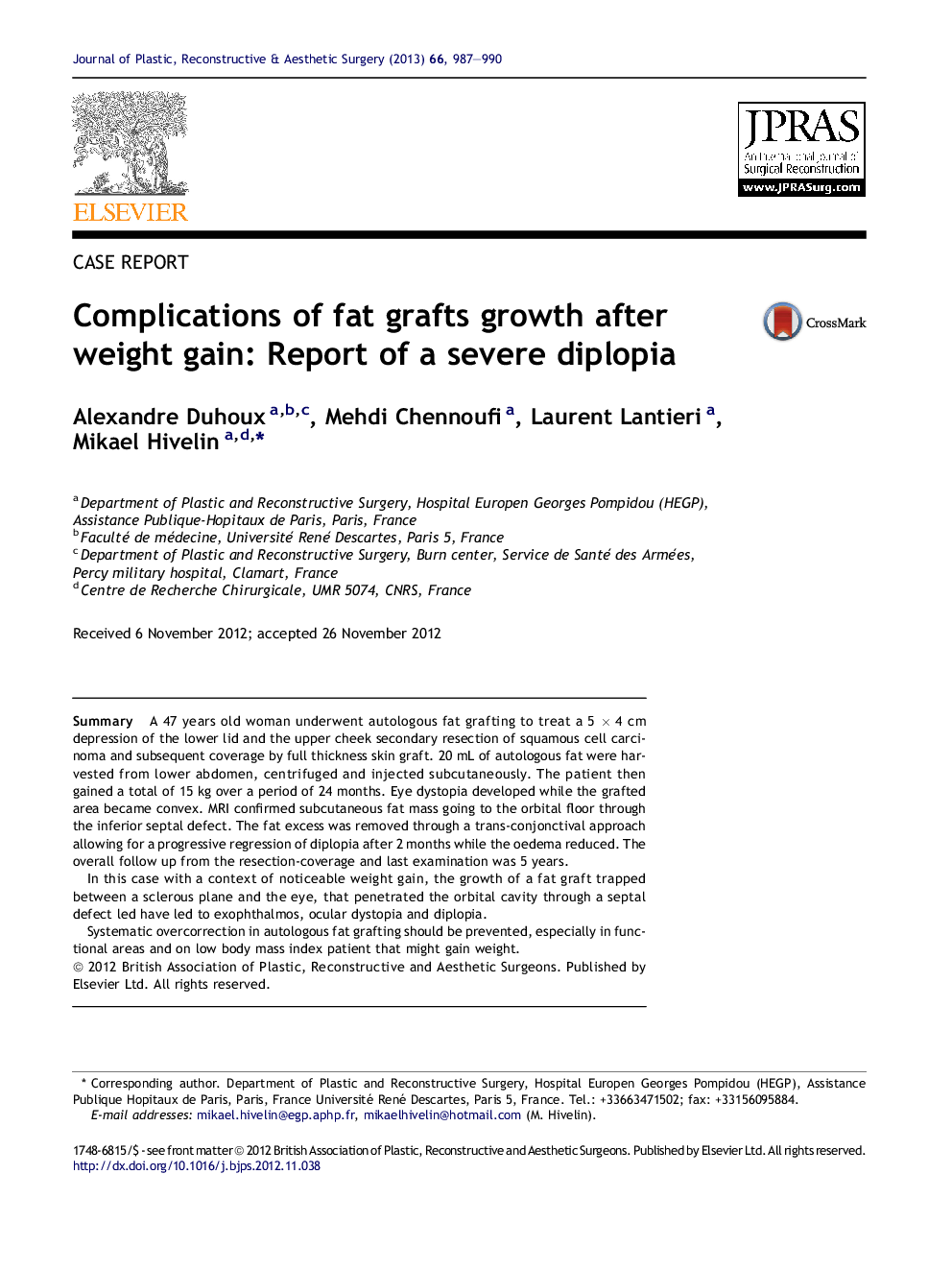| Article ID | Journal | Published Year | Pages | File Type |
|---|---|---|---|---|
| 4118648 | Journal of Plastic, Reconstructive & Aesthetic Surgery | 2013 | 4 Pages |
SummaryA 47 years old woman underwent autologous fat grafting to treat a 5 × 4 cm depression of the lower lid and the upper cheek secondary resection of squamous cell carcinoma and subsequent coverage by full thickness skin graft. 20 mL of autologous fat were harvested from lower abdomen, centrifuged and injected subcutaneously. The patient then gained a total of 15 kg over a period of 24 months. Eye dystopia developed while the grafted area became convex. MRI confirmed subcutaneous fat mass going to the orbital floor through the inferior septal defect. The fat excess was removed through a trans-conjonctival approach allowing for a progressive regression of diplopia after 2 months while the oedema reduced. The overall follow up from the resection-coverage and last examination was 5 years.In this case with a context of noticeable weight gain, the growth of a fat graft trapped between a sclerous plane and the eye, that penetrated the orbital cavity through a septal defect led have led to exophthalmos, ocular dystopia and diplopia.Systematic overcorrection in autologous fat grafting should be prevented, especially in functional areas and on low body mass index patient that might gain weight.
